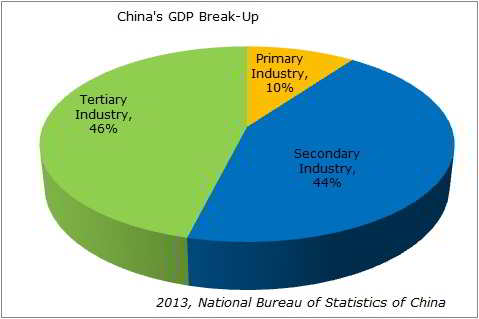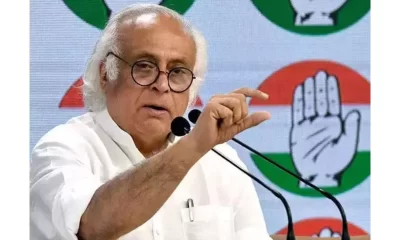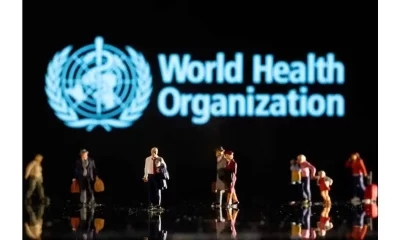Latest business news
How China fudges its employment figures

[vc_row][vc_column][vc_column_text]While its minister has warned of half-a-million job cuts in the manufacturing sector, his promise of rehabilitating these workers in the service sector seems hollow as the figures available simply do not add up
By Sujit Bhar
Here are two news items on the employment scenario in China. Together they present an interesting mosaic on the employment scenario in China.
The first, reported by the Associated Press and (AP) carried by US’ leading daily USA Today, says that Chinese labour minister Yin Weimin said at a press briefing in Beijing that China will cut 500,000 more steel and coal jobs this year “to reduce excess production capacity.”
This was purportedly in reaction to complains in international trading circles of the dumping of cheap Chinese products, wreaking havoc with price structures and weights on commodity exchanges.
The second, issued by news agency IANS on March 2, also from Beijing, and also quoting the same minister, Yin Weimin, talks about how China had “created over 13 million urban jobs for four consecutive years, despite downward pressure and industrial restructuring in the Chinese economy.” This piece of information was provided by the minister to the People’s Daily Online.
Trying to understand Chinese double-speak is like studying Egyptian hieroglyphics, where every gesture and every picture could have many meanings.
Let us try to make sense of these two.
The bad news first.
AP talks about China’s huge effort to shrink its bloated industries including steel, coal, cement, aluminium and glass. It is a known fact that China had more installed capacity than even the worldwide demand. Aided by subsidies, these conglomerates (mostly government-owned or partly state-owned) pushed goods across the oceans, dumping cheap products in western countries and also India, taking advantage of WTO loopholes.
With the arrival of President Donald Trump on the American scenario, the clamour for restricting Chinese supplies has grown. Europe, too, has been up in arms to protect local industries. This has resulted in massive job cuts. The minister had said at the press conference that those laid off will get government help to find other jobs, start companies or retire.
Yin was quotes as saying: “This year, to reduce excess capacity, we need to make accommodation for 500,000 workers.” This, in plain speak, means half a million will be sacked.
Last year 726,000 workers lost their jobs in the same sector.
The minister said that this was 40 percent of the 1.8 million jobs that were to go. While the minister said that they too were provided help to restructure their lives and finances, several reports elsewhere have narrated how these workers simply had to return home to their farms, jobless, hopeless.
Now the supposed good news.
Yin has reportedly said that the “unemployment rate in Chinese cities was relatively low over the past four years.” How has he arrived at such a conclusion? He talks about four factors.
The first is the most stupendous, contradicting all major studies around the world. This is about what Yin calls “sustained economic development”. He talks about last fiscal where China’s GDP growth was 6.7 per cent, pushing the country’s GDP to $10.8 trillion.
However doubtful the first assumption (or clarification) may be, the second lets you peek into the truth. He talks about constant restructuring of industry, to optimise each sector. What does that mean? Yin reveals in his next statement. “Tertiary industry can create on average 20 per cent more jobs than the secondary industry,” he has said.
He pointed out that “last year, the tertiary industry’s contribution to China’s GDP was as high as 51.6 per cent, 11.8 percent higher than that of the secondary industry.”
We need to talk about this in further detail, but the third factor Yin mentioned about was “reform.” This actually elaborates on the second factor, as we will come to know in a while.
Regarding reform, the minister talked about administrative reforms in government and “business reforms”, “cultivating mass entrepreneurship and innovation.”
So what manner of number crunching has the ministry engaged in while explaining two apparently disparate industry factors?
To get to the bottom, we need to understand the nature of “tertiary industry”.
Tertiary industry, as per definition, is “industry that provides services rather than producing goods, or these industries considered as a group.”
China has been, as announced, moving more towards the service sector, trying to reduce its dependence on the manufacturing sector. But how does that explain the employment scenario?
The following pie chart shows how the Chinese depict their stride into the service sector world (2013):
One would expect this to be good news, till one studies this Slate.com graph on the employment in the different sectors in 2010.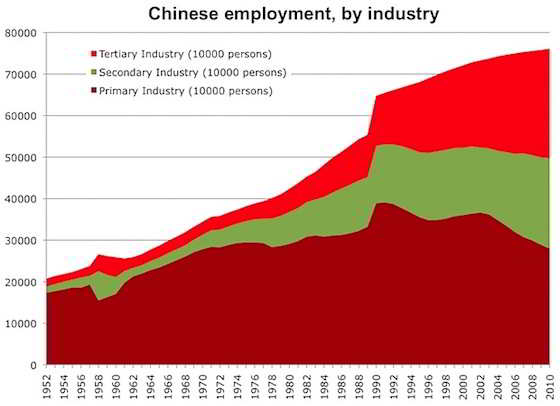 Basically the “reform” is moving workers out of the manufacturing sector and retraining them for the service sector. The numbers don’t add up, sadly. The claims are as hollow as the overall system in China is. For the service sector to absorb all excesses in the manufacturing sector there has to be massive domestic demand (in India, the GDP is spurred by a huge 56 percent domestic demand).
Basically the “reform” is moving workers out of the manufacturing sector and retraining them for the service sector. The numbers don’t add up, sadly. The claims are as hollow as the overall system in China is. For the service sector to absorb all excesses in the manufacturing sector there has to be massive domestic demand (in India, the GDP is spurred by a huge 56 percent domestic demand).
China’s export-driven economy has not been able to adjust as quickly as it would have wanted. Only a small percentage of those laid off are being re-absorbed, also at lower salaries. How that provides such a boost to the overall GDP is a mystery.
Double-speak is a nature of Chinese diplomacy. Reading between the lines should be a nature we should develop in understanding Chinese diplomats.[/vc_column_text][/vc_column][/vc_row]
Latest business news
Google restores delisted Indian apps after government intervention
Google on Saturday restored all Indian apps it had removed.

Google has started to restore all the delisted Indian mobile apps on Play Store agian, which they had removed due to a disagreement over service fees. After a discussion between company representatives and IT Minister Ashwini Vaishnaw, the decision was made, according to sources.
The step was taken in response to Vaishnaw’s strong statement in which he said that it is not allowed for apps to be removed from the Google Play Store. The minister had said, India is very clear, our policy is very clear…our startups will get the protection that they need.
Vaishnaw continued saying that he has already given Google a call. They will be speaking with the app developers who were delisted this week. This is not acceptable. The minister said this kind of delisting cannot be permitted.
Ten Indian companies’ apps were banned by Google on Friday, causing outrage in one of its fastest-growing markets. With 94% of phones running on its Android platform, Google holds a large portion of the Indian market. Popular names like Naukri and Bharatmatrimony were on the list.
The main point of contention is Google’s in-app purchase fees, which range from 11% to 26%. Indian startups have long opposed the US tech giant’s actions, believing them to be unfair.
The founder of Bharat Matrimony, Christian Matrimony, Muslim Matrimony, and Jodii, Matrimony.com, expressed shock at the matchmaking apps’ removal from the Google Play Store.
Shaadi. Com CEO Anupam Mittal described it as a dark day for India’s internet, highlighting the possible broad effects on matchmaking services. He also called Google an evil.
While, Kuku FM Co-founder Vinod Kumar Meena in a statement had said that Google was behaving like a monopoly.
Meanwhile, Google temporarily withdrew the famous Indian payments app Paytm from the Play Store in 2020, claiming a few policy infractions. Due to this decision, the founder of the company as well as the larger startup community came together to build their own app stores and file lawsuits against Google.
Latest business news
Anant Ambani says he is 100% lucky to get Radhika Merchant in his life
Anant Ambani said he was grateful to get Radhika as his life partner. He said he is 100% lucky to get Radhika Merchant in his life. He said every day he is falling more and more in love with her. He added although he had known Radhika for the last 7 years, it felt he had met her only yesterday. He thanked Radhika for everything.

Anant Ambani and Radhika Merchant’s grand three-day wedding celebrations began with a glamorous cocktail night on Friday in Jamnagar. During the celebrations, Anant Ambani also gave a speech wherein he thanked his late grandfather Dhirubhai Ambani and grandmother Kokilaben Ambani for inspiring him. Anant Ambani said he was grateful to get Radhika as his life partner. He said he is 100% lucky to get Radhika Merchant in his life. He said every day he is falling more and more in love with her.
He expressed his gratitude to his mother for pulling together the lavish three-day wedding celebrations in Jamnagar. Anant thanked his mother for all she had done. He said all the arrangements had been done by his mother and nobody else. He added his mother had gone all out and she had worked 18-19 hours a day and he was extremely grateful to her.
He also thanked all the guests who were present there at the pre-wedding celebrations. He said everyone had made it to Jamnagar to make him and Radhika feel special. He said both of them were honored and humbled to have all of them present there. Anant said he was sorry if they had caused an inconvenience to anyone. He asked for forgiveness. He hoped everyone is going to enjoy the coming three days. He also thanked his mother, father, sister, brother, his sister-law and his brother in-law for making this event memorable.
Anant said everyone has been sleeping for less than 3 hours a day for the last 2-3 months and he was very happy to share this joy with everyone. The youngest Ambani talked about his personal struggles and how his parents had always supported him. He further added his life had not been entirely a bed of roses. He said he had also experienced the pain of thorns. He said he had faced many health crises.
Latest business news
Facebook chief Mark Zuckerberg shares pictures from 2nd day of Anant Ambani and Radhika Merchant pre-wedding celebrations
Zuckerberg shared pictures from the 2nd day of Anant Ambani and Radhika Merchant’s pre-wedding celebrations. In the photograph Mark Zuckerberg can be seen along with his wife Priscilla Chan. The couple is exuding happiness as they prepare for the event. He captioned the picture it is getting wild out here.
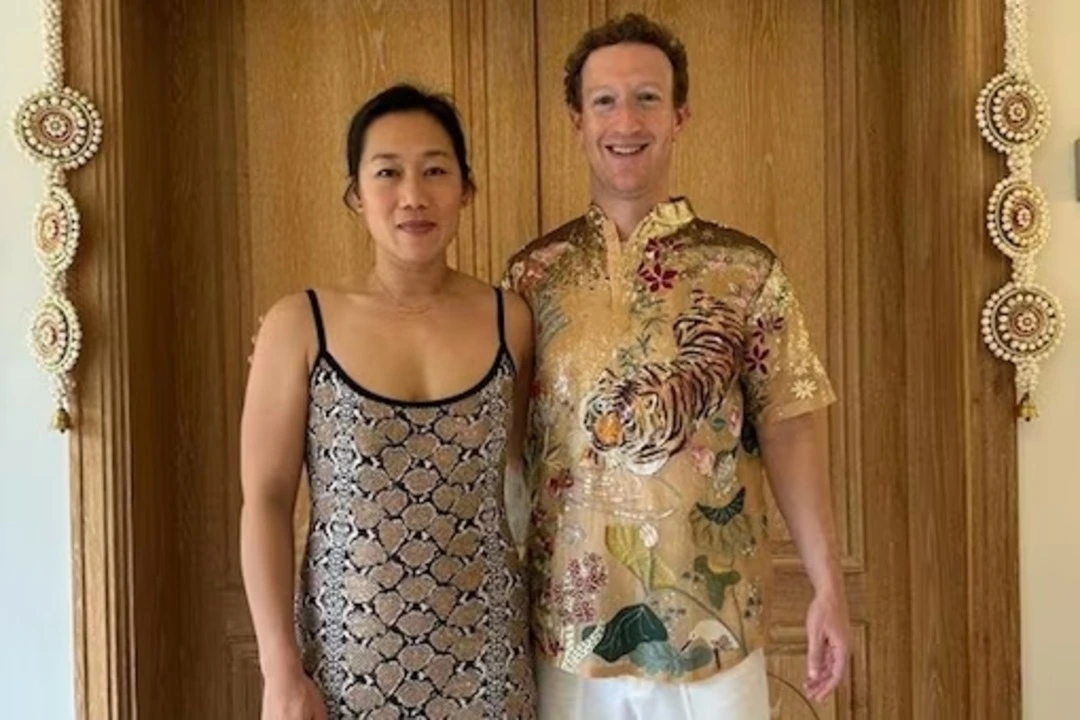
Facebook boss Mark Zuckerberg and wife Priscilla Chan joined the star- studded pre-wedding celebrations of Anant Ambani and Radhika Merchant in Jamnagar on Friday. The event was attended by many prominent figures from different fields. Zuckerberg took to his Instagram handle congratulated the couple and said he loved Indian weddings.
Zuckerberg shared pictures from the 2nd day of Anant Ambani and Radhika Merchant’s pre-wedding celebrations. In the photograph Mark Zuckerberg can be seen along with his wife Priscilla Chan. The couple is exuding happiness as they prepare for the event. He captioned the picture it is getting wild out here.
The theme of the opening day of the pre-wedding celebrations was Evening in Everland as the guests wore cocktail attire. The first day of the grand celebrations elevated the expectations of the guests for the following days. The theme of the 2nd day of the pre-wedding bash is known as a Walk on the Wildside and the guests can be seen in Jungle Fever attire.
Zuckerberg has opted for an animal print shirt with white trousers, Chan is complementing his look in a strappy one piece in black and golden. The Jungle theme is aligned to Vantara, Reliance’s animal welfare initiative undertaken and launched by Anant Ambani a few days back.
International pop star Rihana electrified the pre wedding celebrations on Friday with an amazing performance, marking her debut appearance in India. The chart topping artist engaged the audience with performances of her iconic hits which included Pour it Up, Work and Diamonds.
Zuckerberg graced the opening day, wearing a black-on-black firefly blazer and shoes from Alexander McQueen while his wife Priscilla wore a black gown with gold flower details and other accessories such as dainty chain bracelet, gold necklace and stud earrings. Mark Zuckerberg and wife Priscilla Chan are one of the Power couples invited from the global business community for the festivities currently underway at Jamnagar.
-

 Entertainment16 hours ago
Entertainment16 hours agoBollywood stars Vidya Balan, Kartik Aaryan, Pratik Gandhi, Ileana D’Cruz, Mouni Roy, Radhika Madan, Mrunal Thakur attend Do Aur Do Pyaar premiere
-

 LATEST SPORTS NEWS20 hours ago
LATEST SPORTS NEWS20 hours agoIPL 2024: Delhi Capitals thrash Gujarat Titans by 6 wickets
-

 Cricket news14 hours ago
Cricket news14 hours agoHappy Birthday KL Rahul: Suniel Shetty wishes son-in-law KL Rahul on his 32nd birthday
-
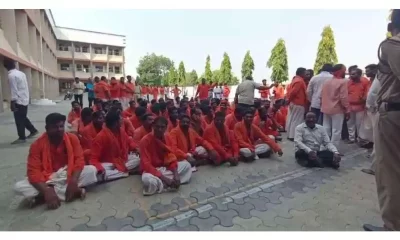
 India News17 hours ago
India News17 hours agoReligious outfit vandalises The Blessed Mother Teresa High School in Telangana after teachers object to students wearing Hanuman Deeksha dress
-
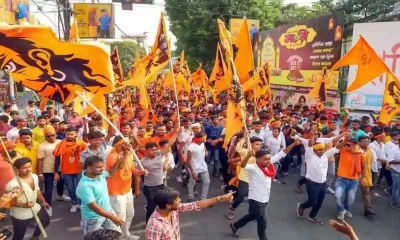
 India News19 hours ago
India News19 hours agoClashes erupt during Ram Navami procession in West Bengal’s Murshidabad district
-

 India News13 hours ago
India News13 hours agoEnforcement Directorate seizes Shilpa Shetty’s husband Raj Kundra’s properties worth Rs 97 crore
-
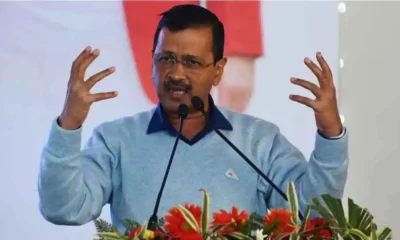
 India News12 hours ago
India News12 hours agoEnforcement Directorate says Arvind Kejriwal is deliberately eating mangoes, sweets, taking sugar with tea to increase his blood sugar level and create ground for bail

